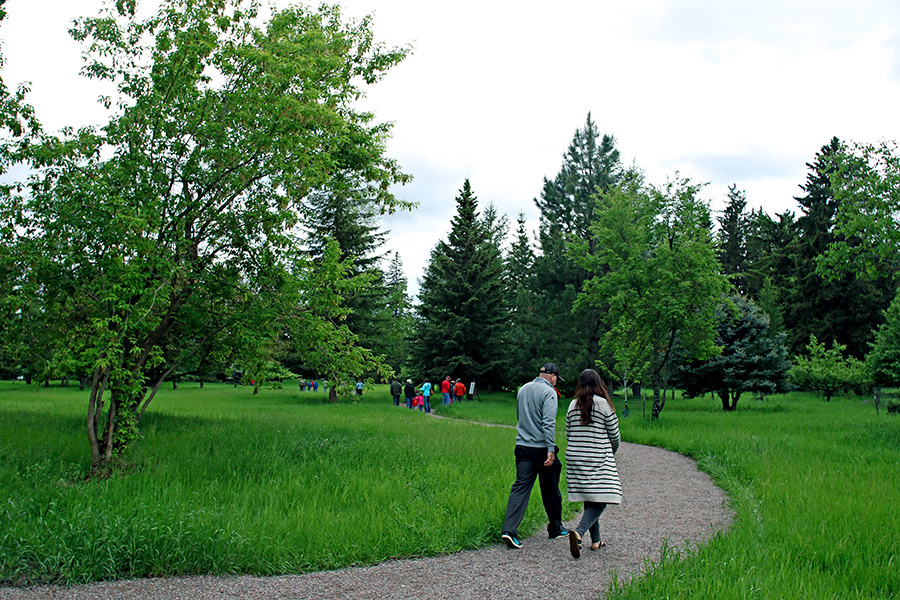The idyllic wooded setting at the newly dedicated James Bakke Nature Reserve in Whitefish is perfectly suited for a contemplative constitutional, relaxing picnic or inspired burst of creativity.
It’s fitting that the park on 601 West Seventh Street off of Baker Avenue arouses ingenuity, given that it is the namesake and former home of the late Whitefish artist James Bakke, whose stunning landscape paintings and photography were nearly always set in the natural world, and he drew untold inspiration from the wilds of Northwest Montana’s Glacier National Park.
To give back to his beloved community, Bakke donated his four-acre property to the city of Whitefish upon his passing in June 2013 at the age of 82, specifying in his will that it be preserved as a natural park.
The Whitefish Rotary club has since worked to maintain the natural park and last year raised $23,000 to contribute to its creation through the Whitefish Community Foundation’s Great Fish Challenge. Several outbuildings and a 1918 farmhouse were removed from the lot and the city built a small parking lot using resort-tax revenue.
The club also constructed the picnic tables, and the reserve was officially dedicated June 1.
Others have also contributed to the project, the city notes, including Stumptown Historical Society, Forestoration and Donna Hopkins, the author whose 2011 book of his work, “James R. Bakke Montana Artist,” drew more attention to the well-known artist.
A quarter-mile walking path girds the green space and a series of interpretive kiosks honoring Bakke were installed, giving visitors unfamiliar with his work an opportunity to grow acquainted with Bakke.
As a “natural park,” the area was landscaped with native vegetation, but the grass is minimally maintained and will not be irrigated or mowed regularly.
The property will be available for winter activities as well, offering the chance for cross-country skiing and snowshoeing.
Bakke grew up on Montana’s plains before moving to Whitefish in 1947 and spending the next three decades working for the railroad. In his spare time, he painted landscapes in a style similar to Vincent van Gogh, the great Dutch post-Impressionistic painter.
Bakke never married or had children, and lived with his mother until her death. He lived his remaining days alone in Whitefish with his cats — he owned 27 of them at one point — on the same property his family first moved into more than 70 years ago.
In a section of Hopkins’ book, Bakke described himself as “older, more crippled, but not poorer.” He continued to find enduring richness in art.
“Though I can no longer paint, I am able to look through these prints and remember the dazzling view in every direction in Glacier, but also those on the prairie with a more subtle color and vibrant memories,” Bakke said.
Hopkins describes Bakke as “a little eccentric” and “reclusive.”
His art, however, reflects a life fully lived, rather than spent in hiding. Decades of avid hiking in Glacier Park and working on the railroad provided ample inspiration.
To learn more about the artist, purchase his work or order a copy of Hopkins’ book, visit jamesbakke.com.
